Ondrej Markus
Entrepreneur in ed-tech, building the future of education as a founder and CEO at Playful.
I write about the future of education, designing learning games, and running a startup.
I'm a generalist, introvert, gamer, and optimizing to be useful.

Build something that doesn't work
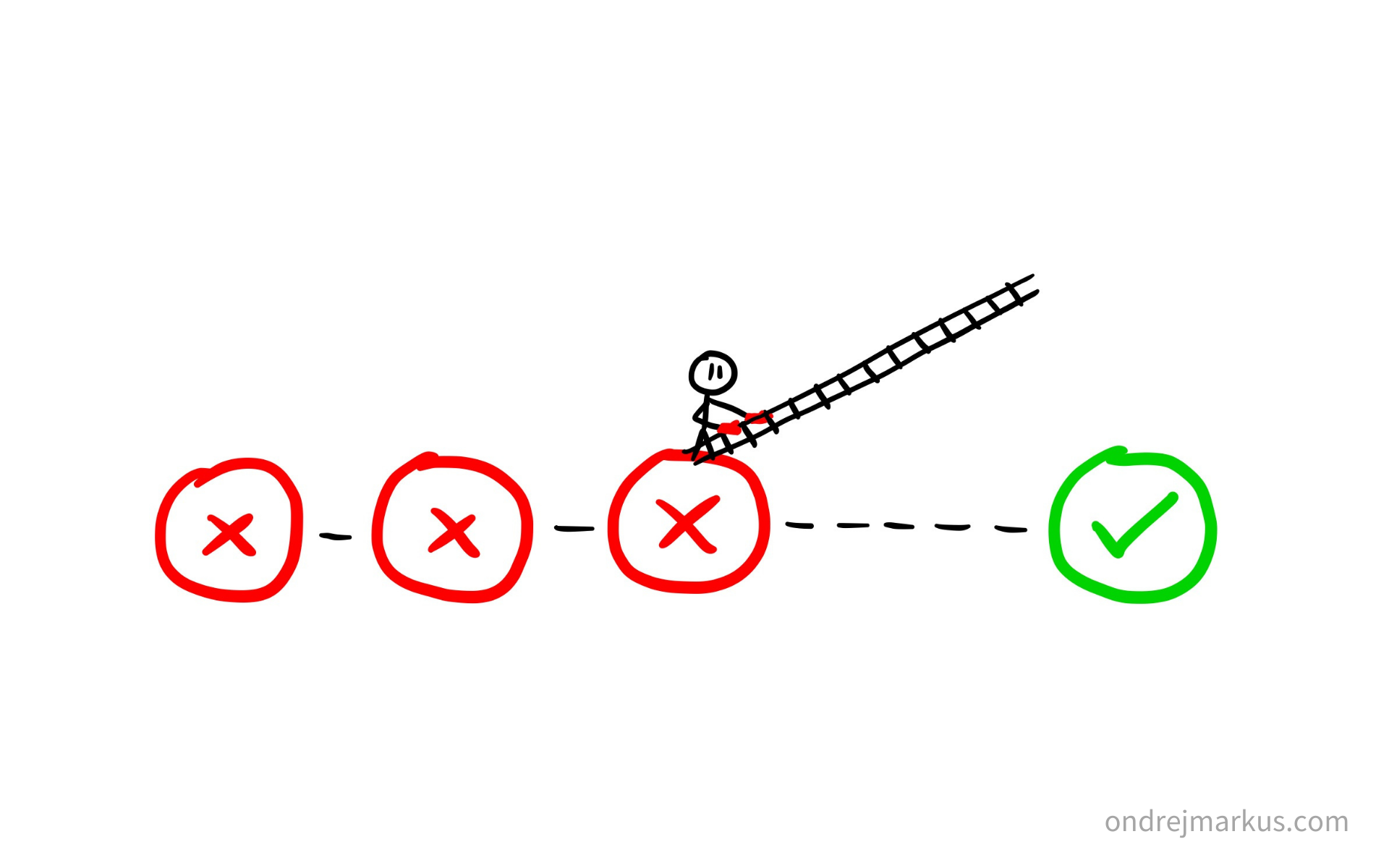
When I was 19, I used all my savings on a strange idea. I started a fashion label of hand-made mittens. Yes, mittens. I know, and I’m not kidding.
Every time I look back, I wonder: “Why the hell I did this right after finishing 4 years of computer technology?”
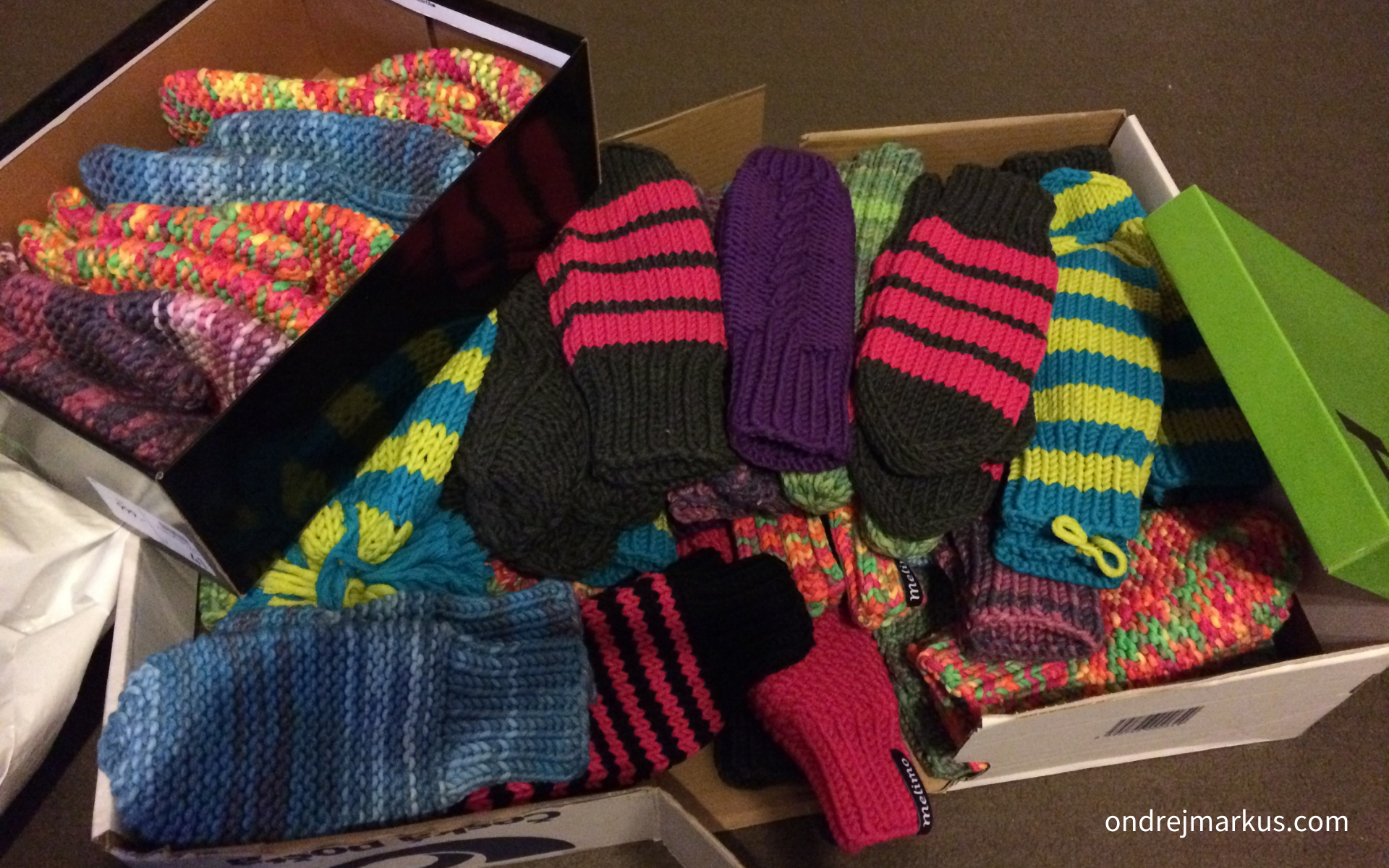
My sophisticated mitten-storage solution. Patent pending.
(No, I wasn’t the one making them, if you were wondering.)
Why would an IT student with zero interest in fashion create a fashion label?
That’s a good question. But I’m glad I didn’t ask it back then. Otherwise, I might not do it. Which would be a tragedy because it led to an unexpected payoff that jumpstarted my career.
When you don’t know what to do, do anything
I knew I would build something before I decided what it’s going to be. I was sick of sitting in classes and launching a small business seemed like a fun thing to do.
I didn’t know how business actually works, so my criteria for ideas were simple:
- A: People will buy it
- B: I can make it with what I know
Also, around the same time, I came across an e-shop with hand-knitted hats. It looked like they are doing well, so I thought: “Hey, I can do this too.”
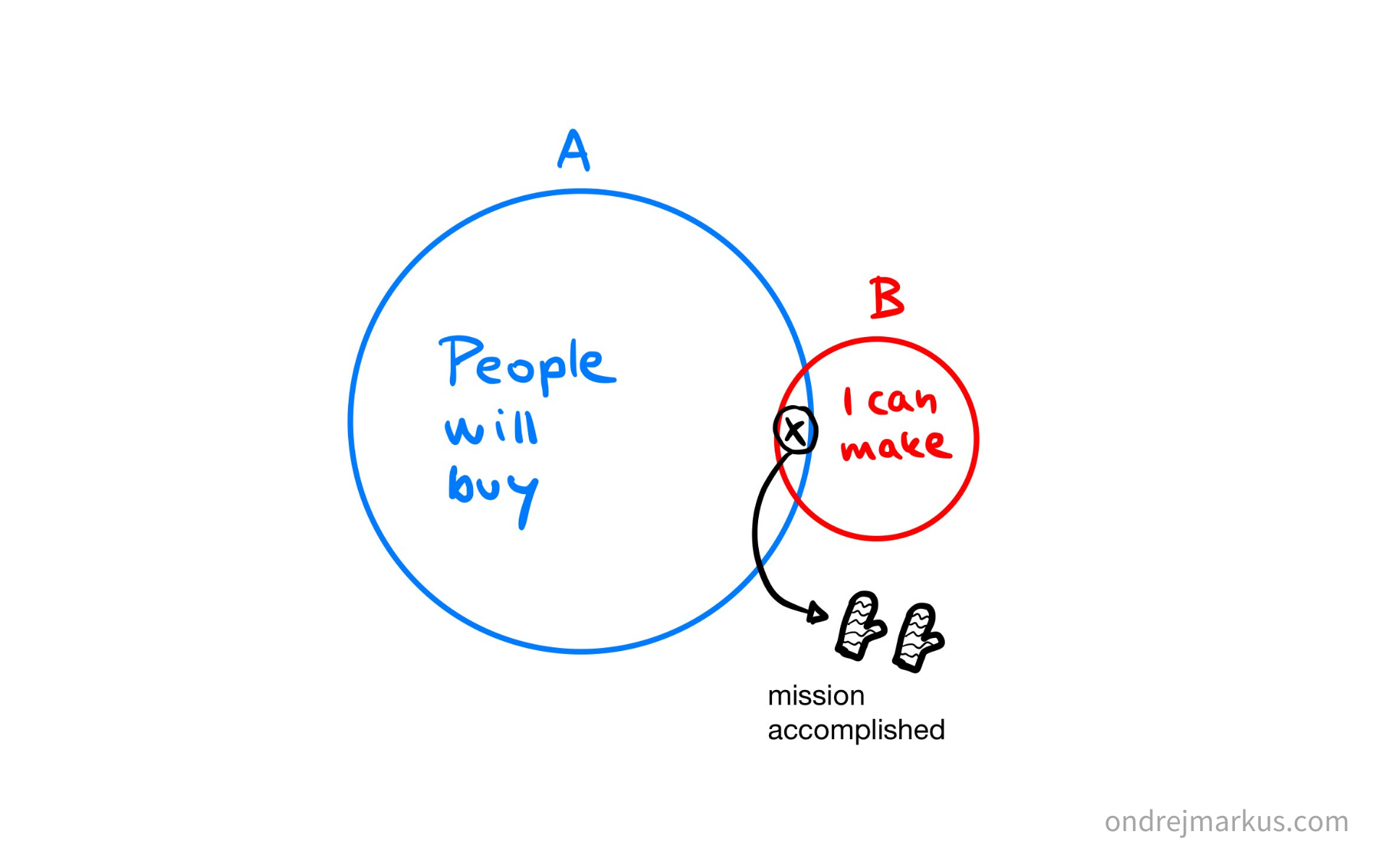
High-school business class lesson 1
Family and friends tried to be supportive, but their reactions ranged from awkward silences to raised eyebrows. Everyone was confused, but they didn’t want to step on my enthusiasm, so they politely nodded as I talked about my business idea.
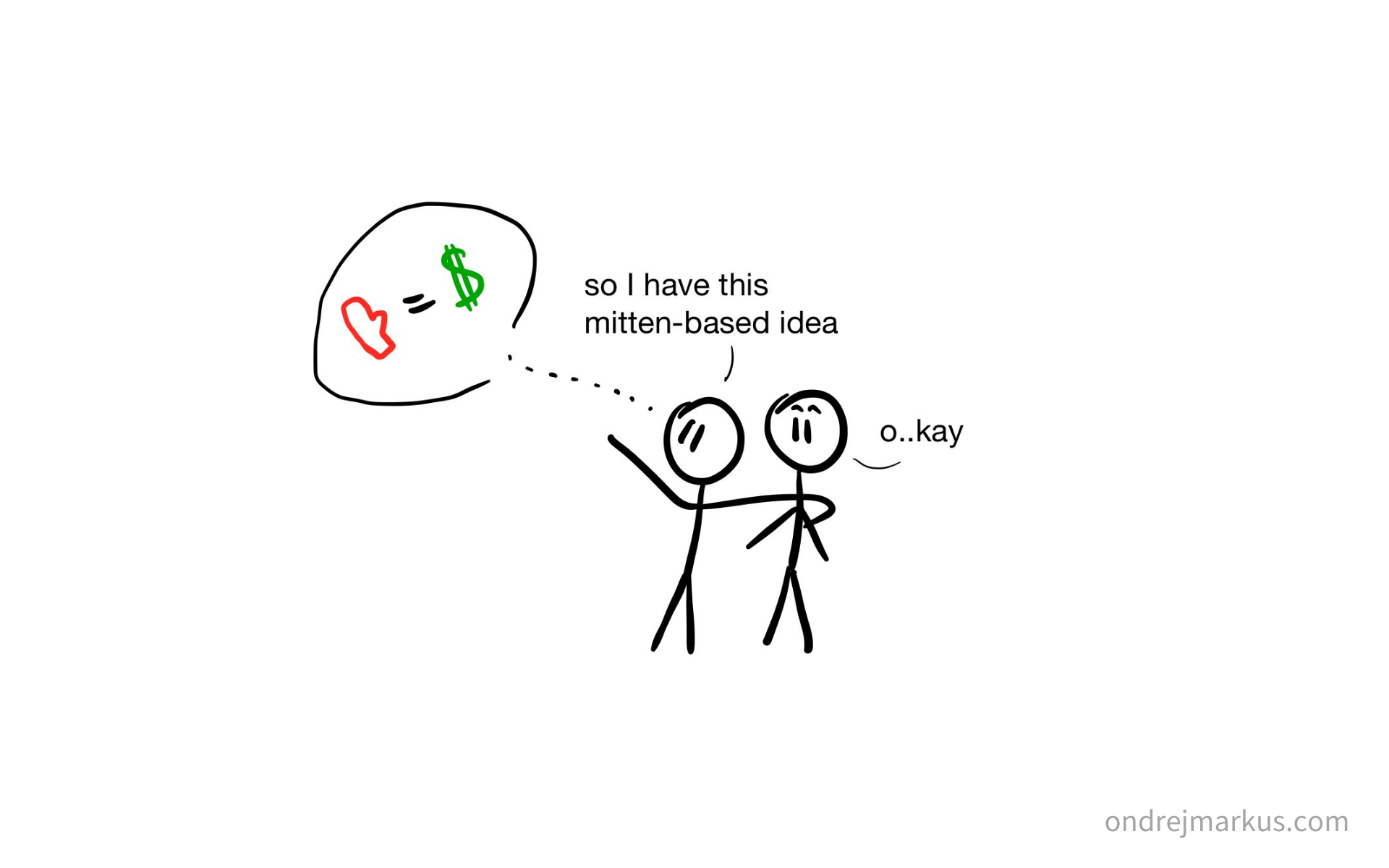
Tread lightly please. You are stepping on my dreams.
I don’t blame them for not understanding. I also didn’t think it was a brilliant idea, but it was the best decent idea I had. And I believed I can make a decent idea brilliant by working hard on it.
So even though reactions from my friends were slightly discouraging at best, I wasn’t going to wait for something better to pop up. Patience was never one of my strengths, and my urge for action was stronger than my need for approval.
My starting point: $800 + the ability to google things, was nothing to write home about, but I was ready to roll.
From zero to hero in 4 months
I knew nothing about knitting or fashion, so I started by looking for someone who did. I dug around the internets and found a woman who made hand-knitted wedding dresses. She seemed like someone who understood the craft, so I went to talk to her in her shop. I told her everything about my mitten project and asked how she would proceed with something like this. And she told me.
But not just that. She guided me through the whole manufacturing process. And most importantly, she made the first prototypes herself and introduced me to her friend who could do the actual knitting in a large enough quantity. Bingo.
Wait, but why did she help me?
For a start, she is a nice person. That’s 80% of the reasons right there. People like helpinng other people. Even more so when the people in need are wide-eyed students who know next to nothing about life.
Secondly, she enjoyed the challenge of making something she never tried.
And lastly, even though I couldn’t afford to pay for her work, I at least offered my mediocre graphic and web design skills. And it turned out that she could use my help with designing a new logo for her website. So we had a deal.
The rest of the business side, I stitched together myself. I put up a simple website with an e-shop system anyone can use for free. I found a photographer and models at my school willing to do a photo shoot just for the experience and a couple of mittens. I set up social media, designed a logo, and, of course, created business cards.

Mittens pictures I used on the e-shop, Instagrams, and such.
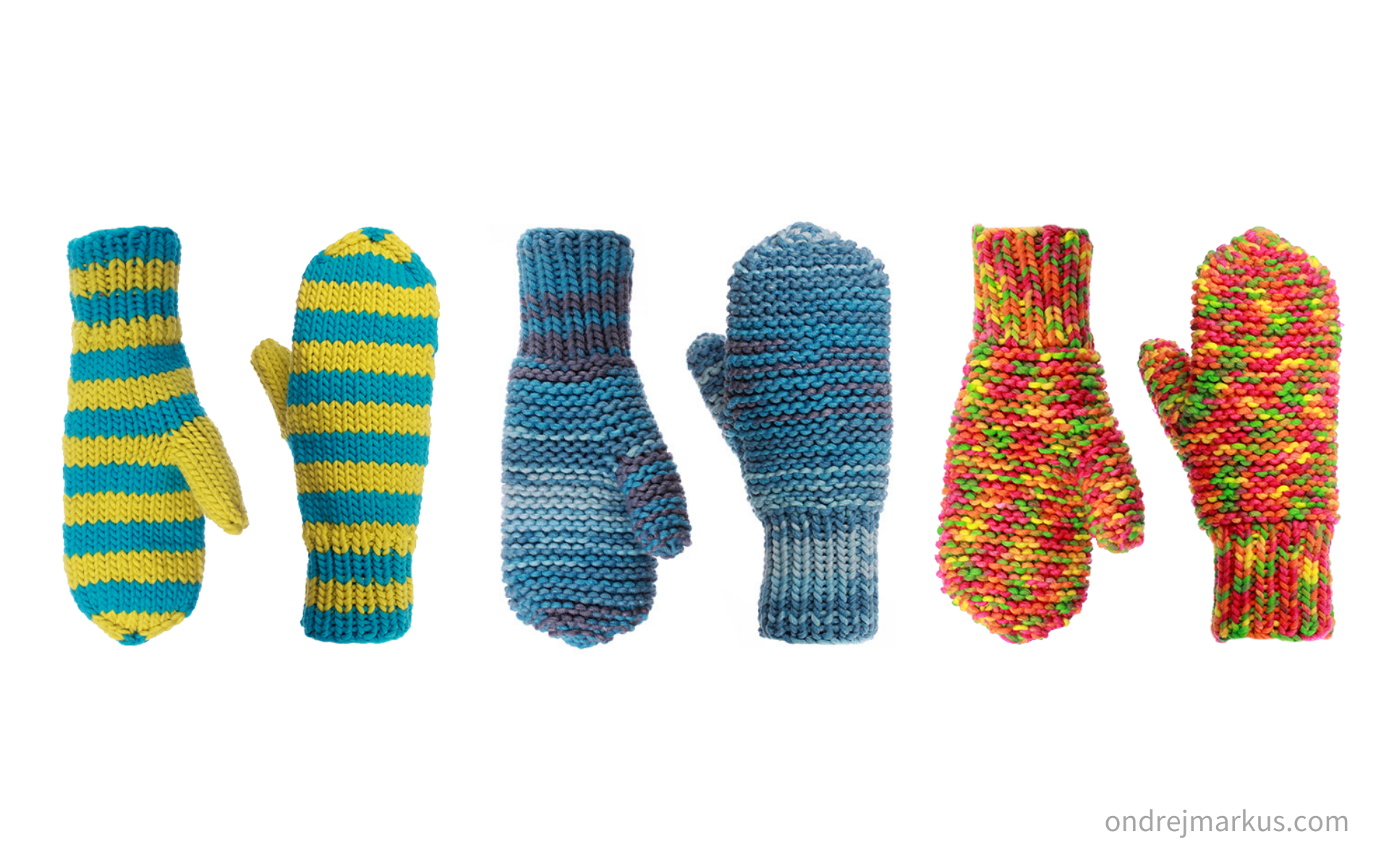
Product pictures a friend made for me in her home studio.
Once the e-shop was up and running and the first batch of mittens in stock, I was ready to launch in the upcoming Christmas season.
The real-world test
To leverage the Christmas business potential, I booked a place at a design market with a stand to sell the mittens myself. I sold 9 pairs in 2 days for a total of $198. The fee for the place was $250. Yayx.
So that didn’t work, but I hoped that online shopping would make up for it. I bet all money on having more mittens in stock in the case that sales went through the roof. What an optimist.
Then, with an empty bank account and an apartment full of mittens, I anxiously awaited my destiny. I could not stand the tension. I kept hitting refresh on the website’s order page like I was trying to resuscitate a business that ceased to show any signs of life.
This was going to be a huge success or an epic fail.
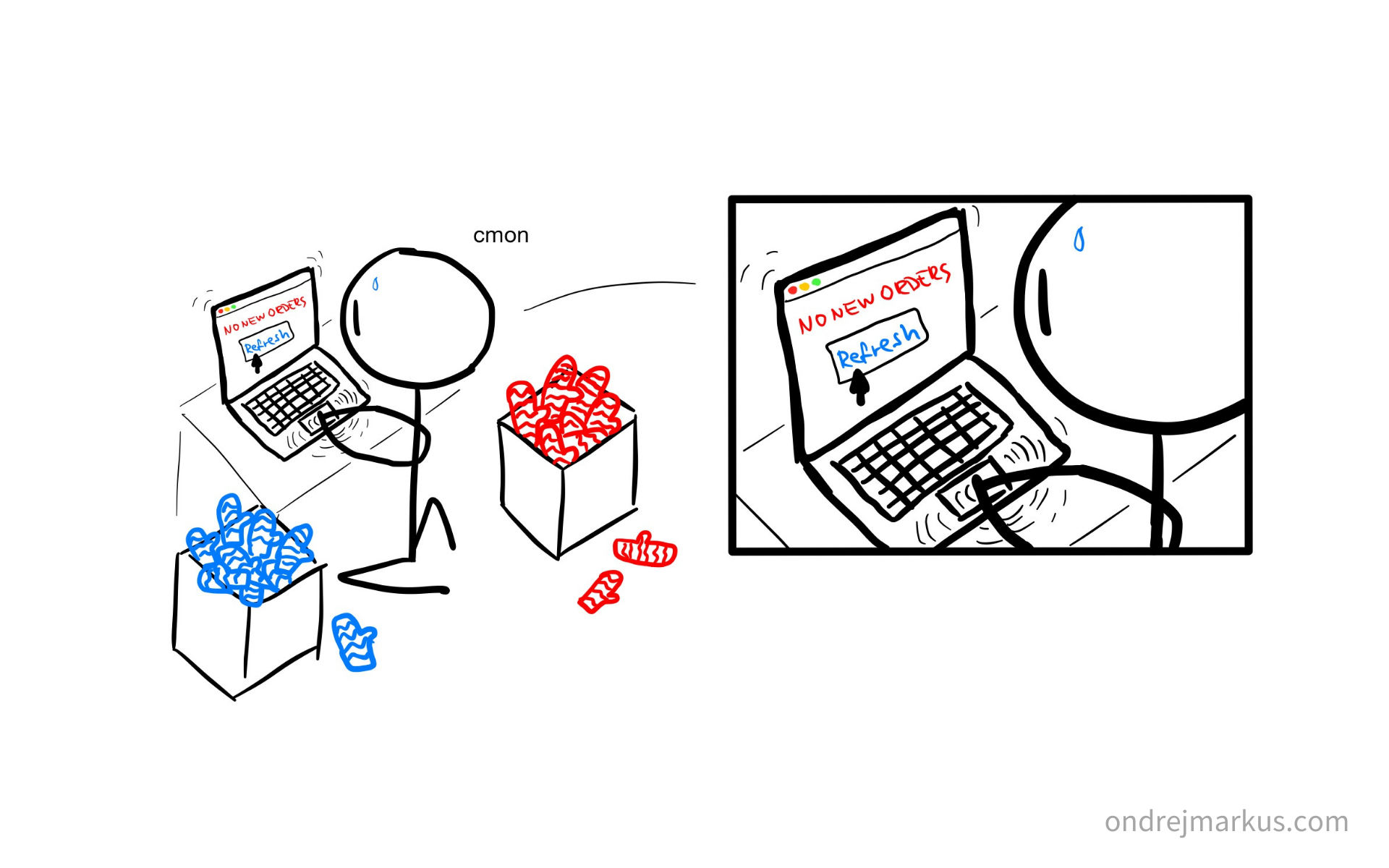
It was a stressful week..
Overall, I sold 9 more pairs from my stock of 53 items. 3 of them bought by my mom and friends.
The problem was in my belief that if you build a thing, people will find it, like it, and buy it. I didn’t know what marketing is. I didn’t promote my products anywhere. And waiting for strangers to discover you in the internet ocean hasn’t proved to be an effective strategy.
Even in the aftermath of the holidays, no orders came, so I thought I will take my losses, heal my wounded pride, and try again the next year.
The unexpected payoff
In about a month, I read an article about a young entrepreneur in Prague who lead a studio developing mobile apps and games. I really liked what they were doing, and they had a job opening for a project manager. I had no idea what that meant, but I emailed them that I would like to work there. What’s the worst that could happen, right?
I had no experience except for the boxes of mittens located in my apartment which didn’t seem relevant for the job. But I had nothing else, so I mentioned it in my email with a pinch of shame at the back of my throat as I hit send.
The guy from the article got back to me the very same day. He was impressed with the mittens business and wanted to meet. I danced on the table.

We met the next day, and I got the job. One I would gladly do for free to be around and learn from those guys. So getting paid for it was a dream scenario. It changed my life by showing me I can truly enjoy the work I do. And it was the failed mittens business that made it possible.
Show your mistakes to get a job
Earlier, in the job interview, the CEO asked me about my venture. My insides twisted in panic. I was afraid that if he found out it didn’t work, the interview would be over. But I also didn’t want to lie, so I nervously told the story of my mitten defeat.
His reaction surprised me. Not just that my revelation didn’t end the interview, it kickstarted a friendly chat of two fellow entrepreneurs sharing their mistakes with each other.
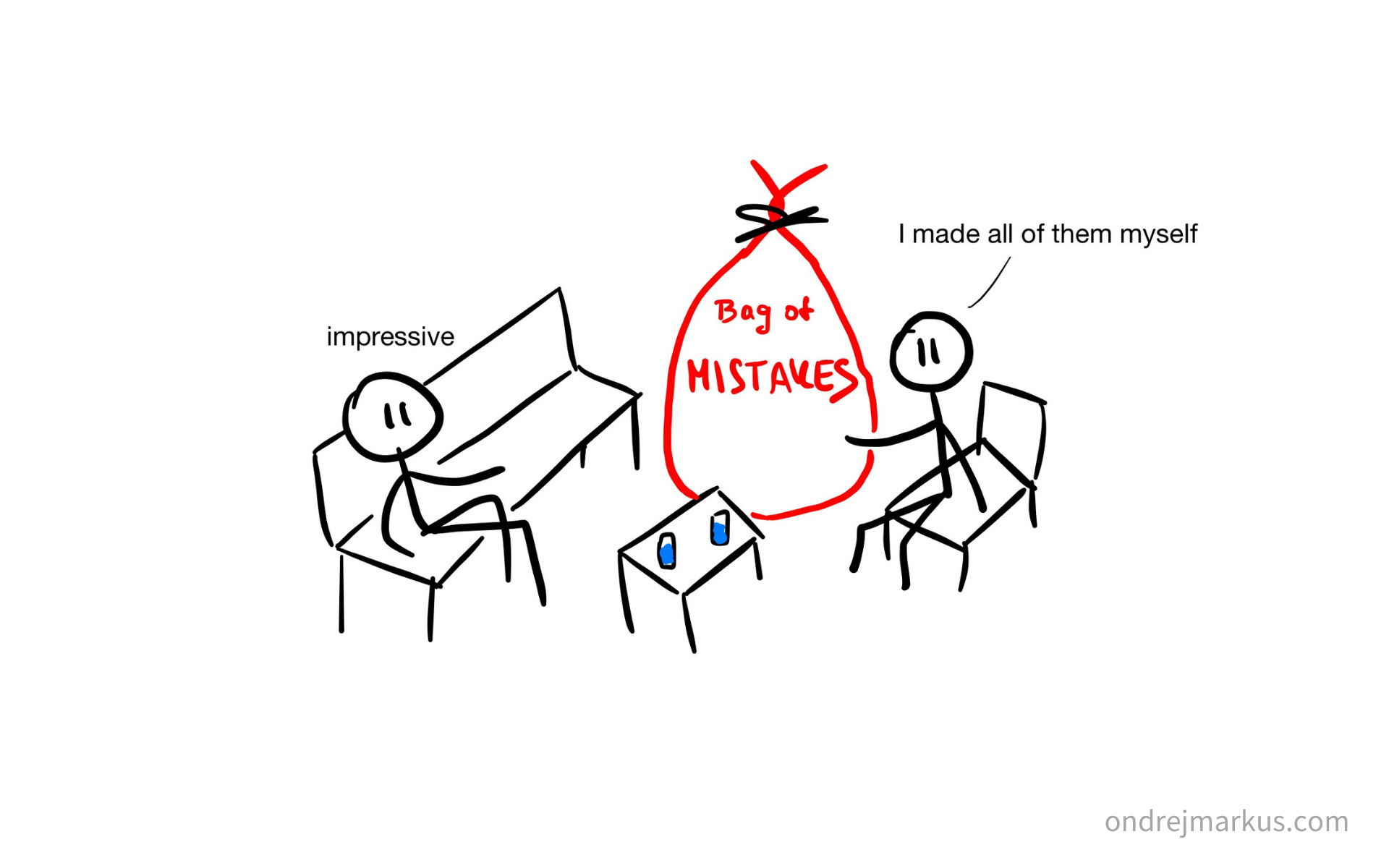
Your mistakes are valuable experience.
A few months later, the CEO confessed to me that it wasn’t relevant for the job if the business worked at all. He wanted to understand how I lead a project. Whether I can own my mistakes instead of blaming external circumstances.
He knew, as an entrepreneur himself, that there is no way to avoid mistakes when you build something from scratch. To make lots of mistakes and learn from them is infinitely more impressive than not making any. Because the only way to make no mistakes is to do nothing, and no one is impressed by that.
Build something, anything
The goal, of course, isn’t to build garbage on purpose. All of us want to create useful things. But don’t let the fear that your project isn’t good enough to stop you. Do something.
Write a film review blog, design a board game, launch an e-shop with yoga mats, set up a stand to sell melon on a stick in parks, or anything else you might enjoy.
Don’t wait until you feel qualified for a job and build something instead. It’s okay to be afraid. Do it anyway. Because even if it doesn’t work, it will open unexpected opportunities for you in the future.